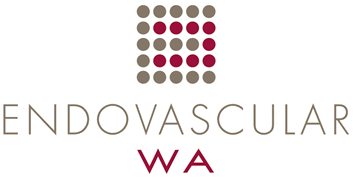Radiofrequency Ablation (RFA)
Radiofrequency ablation (RFA) is a minimally invasive procedure that uses specialized equipment to target nerves responsible for joint and nerve related pain. RFA is usually performed under local anesthetic and can provide pain relief for up to 18 months.
As with many spinal injections, RFA is best performed under Imaging guidance – fluoroscopy (live x-ray)or CT , for precise placement of the needle and To avoid complications .
RFA treatment involves our Interventional Radiologist carefully placing needles directly targeting nerves that are causing pain. The target nerve is numbed to minimize pain whilst heat is produced at the tip of the needle. This heat lesion disrupts the nerves ability to send pain signals to the brain.
RFA can provide reduction in pain from 6 months to a few years.
There are two types of Radiofrequency treatments;
- Radiofrequency neurotomy (rhizotomy) – A Rhizotomy, also known as a radio frequency denervation, sends heat of 90 degrees celsius for up to 90 seconds through a needle to stun small sensory nerve endings. It is typically used to treat facet joint, knee joint and sacroiliac joint pain.
- Pulsed Radiofrequency creates heat to the nerves but at a lower temperature of 42 degrees Celsius for up to 150 seconds. This treatment provides pain relief without causing significant damage to nerve tissue.
Radiofrequency Neurotomy
Radio frequency Neurotomy is a needle-based treatment used to treat pain originating from the posterior spine structures, such as the facet joints or sacroiliac joints. Radiofrequency neurotomy can be performed on any part of the spine that causes you pain including;
- Lower back pain (lumbar facet joint pain)
- Middle back pain (thoracic facet joint pain)
- Neck pain (cervical facet joint pain)
- Sacroiliac joint pain (SI joint)
- Leg pain (lumbar sympathetic plexus)
- Abdominal pain (sympathetic ganglion)
- Pelvic pain (hypogastric plexus)
Pulsed Radiofrequency
This technique is not the same as that used for a radiofrequency ablation procedure. The word “pulsed” means this technique applies energy to the electrode intermittently. This keeps the temperature very low, unlike the higher temperatures required for an ablation. Pulsed radiofrequency can be used on any nerve that causes or generates your pain including;
- Facial pain
- Arm pain
- Chest pain
- Abdominal pain
- Hip pain
- Knee pain
- Neuromas
- Occipital headache
- Shoulder pain
- Trigeminal neuralgia
- Pelvic pain
During the procedure
Rhizotomy treatments are performed using state-of-the-art image guiding technology. The area of skin on your neck or back will be cleansed with an antiseptic solution and the Doctor will inject local anaesthetic into the skin.
After the numbing medicine takes effect and with the assistance of the image guidance technology, the radiologist will insert a special radio frequency needle. You will feel some dull pressure but no pain. After confirming that the needle tip position is correct, an electrode is passed through the inside of the needle. Using electrical stimulation, the doctor will verify the correct nerve. You will feel a tingling sensation similar to hitting your “funny bone”. You may also experience some muscle twitching.
The tissues surrounding the needle tip are then heated when an electric current is passed using the radio frequency machine for 90 to 120 seconds. This will numb the nerves. After the procedure, we ask that you remain at the Clinic until the doctor feels you are ready to leave.
Post procedure
After the procedure, you may experience some muscle soreness for a few days. If so, you may want to apply ice or a cold compress to the affected area. Depending on how you feel, you may resume normal activities and return to work the following day. If the doctor prescribes physical therapy, it is very important that you continue with the physical therapy program.
Risks
Risks may include bruising and bleeding at the injection site, infection at the injection site, damage to nerves or blood vessels near the target nerve.
We are here to help
Endovascular WA uses the latest evidence based techniques to provide effective pain management for conditions relating to joint, soft tissue and nerve inflammation. We provide a number of pain relief procedures using CT, fluoroscopy and ultrasound guided injections.
- Irritated or compression of spinal nerves (cervical and lumbar nerve root sleeve)
- Lumbar sympathetic plexus block/chemical sympathectomy
- Brachial and lumbar plexus blocks
- Median nerve blocks (Carpal tunnel syndrome)
- Lateral femoral cutaneous nerve block for meralgia paraesthetica
- Nerve entrapment syndromes
- Occipital neuralgia (greater occipital nerve block)
- Herniated Disks
- Joint and bursa injections
- Alcohol and RF ablation of Morton’s Neuromas
Even though the injection may not result in bringing about permanent pain relief, significant pain relief may be achieved for a prolonged period of time, potentially if there is a delay in surgery.
If you have any further questions regarding Image Guided injections for pain including Rhizotomy Treatments, please do not hesitate to contact our Subiaco rooms on (08) 9284 2900.
